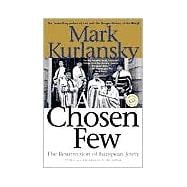
| Introduction 2002 | xi | ||||
| Introduction 1994 | xxiii | ||||
| Prologue: The Fifth Son in Berlin | 1 | (16) | |||
| PART ONE: The Bread Years | |||||
|
17 | (7) | |||
|
24 | (16) | |||
|
40 | (11) | |||
|
51 | (8) | |||
|
59 | (6) | |||
|
65 | (10) | |||
|
75 | (14) | |||
| PART TWO Broygez in the Cold War | |||||
|
89 | (5) | |||
|
94 | (12) | |||
|
106 | (15) | |||
|
121 | (9) | |||
|
130 | (6) | |||
|
136 | (11) | |||
|
147 | (10) | |||
| PART THREE '68 | |||||
|
157 | (7) | |||
|
164 | (14) | |||
|
178 | (7) | |||
|
185 | (14) | |||
|
199 | (14) | |||
| PART FOUR Rite of Passage | |||||
|
213 | (5) | |||
|
218 | (7) | |||
|
225 | (12) | |||
| PART FIVE The Silence | |||||
|
237 | (5) | |||
|
242 | (8) | |||
|
250 | (17) | |||
| PART SIX Europe, New Again | |||||
|
267 | (25) | |||
|
292 | (10) | |||
|
302 | (15) | |||
|
317 | (10) | |||
|
327 | (6) | |||
|
333 | (9) | |||
|
342 | (18) | |||
|
360 | (25) | |||
| Epilogue: Freedom in the Marais | 385 | (4) | |||
| Appendix: Jewish Populations in Europe | 389 | (2) | |||
| Bibliography | 391 | (6) | |||
| Index | 397 | (12) | |||
| Acknowledgments | 409 | (2) | |||
| A Reader's Guide | 411 |
The New copy of this book will include any supplemental materials advertised. Please check the title of the book to determine if it should include any access cards, study guides, lab manuals, CDs, etc.
The Used, Rental and eBook copies of this book are not guaranteed to include any supplemental materials. Typically, only the book itself is included. This is true even if the title states it includes any access cards, study guides, lab manuals, CDs, etc.
Excerpted from A Chosen Few: The Resurrection of European Jewry by Mark Kurlansky
All rights reserved by the original copyright owners. Excerpts are provided for display purposes only and may not be reproduced, reprinted or distributed without the written permission of the publisher.